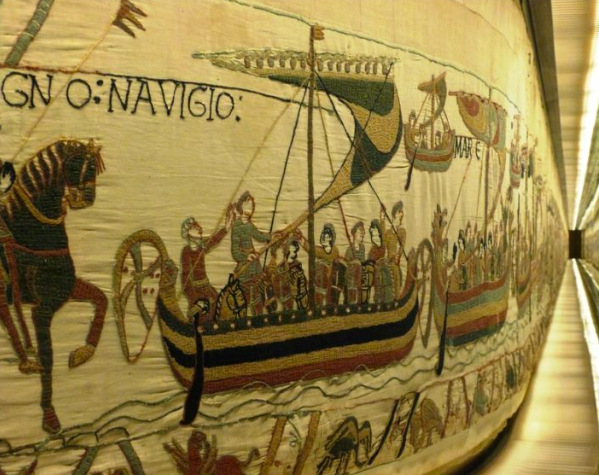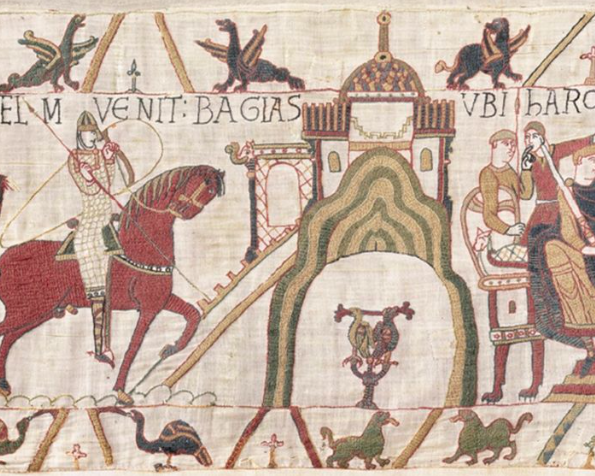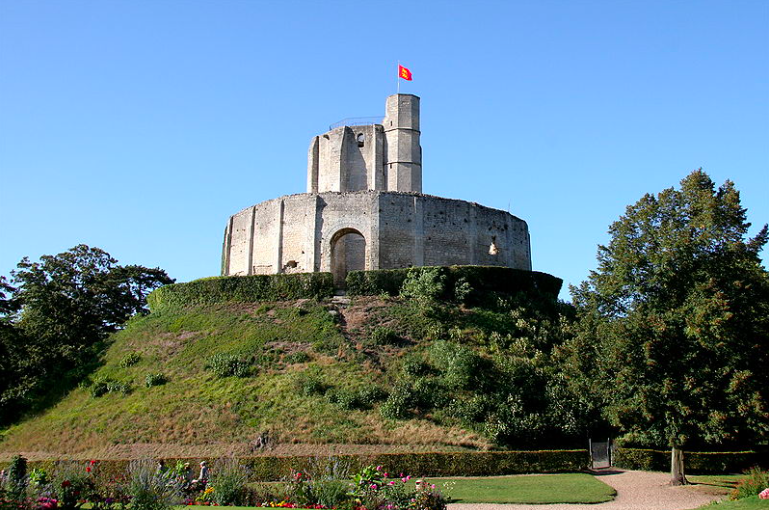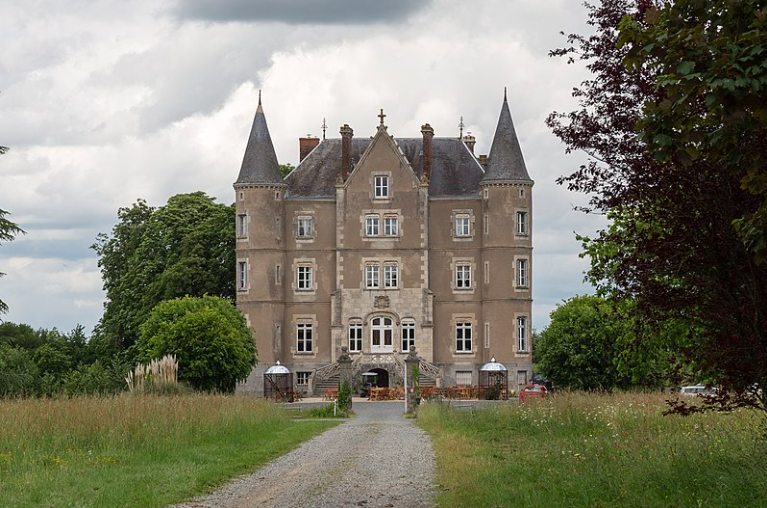Medieval Castles: Motte & Bailey — Part #2
Welcome to Part 2 of the Medieval Castle series where we’ll learn about the Motte and Bailey castle design. If you’re new to the series, welcome! A link to Part 1 is available further down in this article if you would like to read it.
As a child, I was fascinated with castles. I loved reading stories and seeing movies featuring them. This fascination is still with me today. In fact, I am planning a European castle tour in the not-too-distant future, so you’re bound to be hearing more from me.
To prepare for my adventure, I started researching castles. What I found about the designs, architecture, and construction was fascinating, and I hope you find it interesting too.
To start this mini-series join me in 11th-century Normandy, France, the birthplace of French castles; let’s go exploring together! I promise this will not be ‘dry’ history… And here you can follow each new article in the series as its published.
- Medieval Castles: Almost everything you wanted to know – Part 1
- Motte and Bailey Castles – Part 2 (this one)
- Shell Keep Castles – Part 3
- Stone Keep Castles – Part 4
- Concentric – Part 5
Medieval Castles: Different types of Architecture
The earliest castle design was called ‘Motte and Bailey’, a literal translation of the two Old French words: “Motte, meaning clod of earth, and Bailey (or ballium), meaning palisaded enclosure.”
These castles resembled a figure eight with a keep[i] built on top of a hill (the motte), and the bailey, an elongated, enclosure built below the hill.
What is a Motte?
Mottes were (usually) man-made hills, made frequently by forced labor, that could range in height from 10 to 100 feet (3 to 30 meters), and from 98 to 295 feet (30 to 90 meters) in diameter, with flat tops to accommodate a ‘keep‘ and a protective wall around it.
Sometimes the protective wall was large enough to support a wall walk. If there was a wall walk, the gap between the two was filled with dirt and rocks to support the weight of additional soldiers to guard the keep.
What is a Bailey?
The bailey was an enclosed courtyard at the bottom of the motte. Most baileys were kidney-shaped to fit against the circular motte, but in many cases, the typography of the land determined their shape.
While the ‘keep’ housed the lord, his family, and some nobles, the ‘bailey’ functioned as the town for the lower classes. Here you would find stores, military barracks, stables, and workshops. Traveling between the bailey and the motte was usually over a bridge or by steps cut directly into the motte.
Castle Construction: Motte and Bailey
When looking for a place to live, what is one thing – if not the main thing – you consider? Location! Would it surprise you to learn that location is one of the main things Medieval builders considered too?
Whenever possible, Motte and Baileys were built on natural hills, lessening the amount of soil needed to build them. Unfortunately, there were not enough hills so most of them were fully built. The castles were also built by rivers and lakes. Not only for obvious reasons but also as part of the castle’s defense. The water could be diverted into man-made ditches surrounding the bailey, creating a mote[ii].
The keep was either built on top of the new motte or at the same time as the motte. If the latter, the keep was fully or partially buried in the motte. The partially buried area was used as a cellar.
Location wasn’t the only thing builders considered. Building materials were also a huge decision. Early keeps were built of wood because it was abundant, strong, and lightweight (which was a concern for building on the loose soil of a new motte). The downside was its vulnerability to fire. To defend against fire, keeps were covered with animal skins.
Castle History: Motte & Bailey
The Emergence and Decline of the Design
There is some debate as to when the first Motte and Bailey castle was built. Some believe it was built in 1010 by Faulk Nerra, the Count of Anjou while others believe there is archeological evidence as far back as 979.
The design originated in northern France and was exclusive to the area until William the Conqueror, the Duke of Normandy, invaded England in 1066 in the Battle of Hastings, at which time many Motte and Baileys, including Hastings Castle, were built by his troops.


Interestingly, the Bayeux Tapestry depicts the Battle of Hastings, as well as the building of Hastings Castle, (which can be found on panel 45). It’s worth seeking this out when you’re next in France or you can review panel by panel right here online.
As stone became a more popular building material, the Motte and Bailey design became phased out. By the 12th century, it was gone.
The Pros and Cons of the Motte and Bailey Design
Advantages
The design was popular because timber was inexpensive, construction didn’t require any skilled labor, and they were quick to build, typically within a few weeks to a few months. This was especially important in newly conquered territories in which the subjected people may attack.
Disadvantages
As you can imagine, man-made hills and wooden structures don’t fare well over time. Exposure to weather caused ‘mottes’ to erode and ‘keeps’ to collapse. Not to mention, their susceptibility to fire.
Motte and Bailey: a related piece of trivia to try using
A light-hearted point of interest.
Did you know that the motte-and-bailey fallacy (named after the motte-and-bailey castle) is a form of argument? It is an informal fallacy where an arguer conflates two positions that share similarities, one modest and easy to defend (the “motte”) and one much more controversial and harder to defend (the “bailey”).
according to Wikipedia
Motte and Bailey Castles in France, England, Belgium, and Scotland

Two Motte and Bailey castles still stand in France today, namely Chateau de la Motte and Chateau de Gisors; however, Chateau de la Motte is now a private residence and has become well-known as the setting for the Channel 4 program ‘Escape to the Chateau‘.


And, you’ll find other examples elsewhere in Europe:
- England: Windsor Castle
- England: Hastings Castle
- Belgium: Gravensteen Castle
- Scotland: Hermitage Castle
Have you ever visited any of these castles? Please share your thoughts and experiences in the comments below.
Image credits
Bayeux Tapestry
Chateau de la Motte: via their website
Chateau de Gisors: via Wikipedia
Gallery – Chateau de la Motte-Husson via Wikipedia
References:
[i] The strongest, most secure part of a medieval castle. [ii] A deep and wide trench around the rampart of a fortified place (such as a castle) that is usually filled with water.





